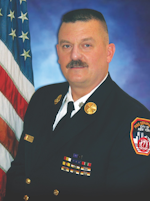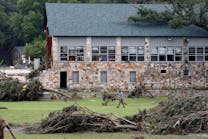The first activity that’s conducted in many career fire companies is the roll call. It’s a brief yet vital event that has a dramatically positive effect on the shift that’s about to begin.
Generally, the roll call is conducted by the officer of each company, but some houses that have a truck and an engine conduct a single roll call. That said, a roll call for each unit facilitates a circumstance in which each unit has its own plans and schedule for the upcoming tour.
Planning
Planning for roll call begins at the end of the previous shift. Let’s say that a company officer, after responding to 12 calls and conducting three hours of building inspection activities along with the usual daily activities, sees that there are 90 minutes left in the shift and starts to wrap up. The connection here with the roll call for the next shift, which is 48 hours away: Several activities weren’t finished. For example, one last inspection form must be completed, and a lost tool report wasn’t forwarded to the battalion. The officer decides to slide these items into his office mailbox, so they can be completed on the next shift.
After exchanging information with the arriving lieutenant, the company officer departs.
On arrival 48 hours later and after relieving the off-going officer, including discussing issues that must be handled immediately, our company officer takes a seat in the office and looks at the documents and notes that were left there. One is from the off-
going officer that reminds that night training at the academy is scheduled in a few hours. Another is a fire report that requires a signature.
In addition to dealing with those items, the officer looks at the list of incoming firefighters for this shift. One of the “regular” firefighters is off for the shift, and a detail from another company will ride with the other members. This detailed member is a truck or ladder company member, and the officer’s unit is an engine. This might require an adjustment of riding positions in the interest of matching firefighters with the position that they are best suited for.
It’s important to keep in mind that this officer didn’t conduct the roll call yet. All of the activities, planning and discussions that occurred are part of the rather extensive preparation.
Having arrived 45 minutes before the start of the shift, the officer had sufficient time to assemble all of the information that was collected since the end of the last shift. The bells ring, and now it’s the shift change and time for the officer to hold a roll call.
Location
A roll call can be conducted just about anywhere. Some officers like to do it on the apparatus floor near the company rig, and others like to sit around the kitchen table with their crew. Wherever it’s held, it probably should be conducted there regularly. Firefighters know that location and will gather there as the shift change approaches. If a new or unfamiliar officer is working, that person usually is informed about the roll call location by another officer or a member of the crew.
The details
Now that all of the members are assembled, the officer who is the subject of our scenario can see that the members who are present are the same ones who are listed on the incoming roster, and they are given a riding assignment.
The firefighters inform the officer that the apparatus was inspected, and all of the tools and equipment are ready to go. The chauffeur informs the officer that the rig is a spare, but it’s in great shape.
The officer informs the members of the training at the academy and that it might affect some of the details of the evening meal. The officer also takes the opportunity to advise one of the firefighters to change into the proper uniform shirt.
Time and thought
So, you can see that it requires much more time to prepare for a roll call than to conduct one. Like so much else in life, time spent in preparation always pays off.

John J. Salka Jr. | Battalion Chief
JOHN J. SALKA JR., who is a Firehouse contributing editor, retired as a battalion chief with FDNY, serving as commander of the 18th battalion in the Bronx. Salka has instructed at several FDNY training programs, including the department’s Probationary Firefighters School, Captains Management Program and Battalion Chiefs Command Course. He conducts training programs at national and local conferences and has been recognized for his firefighter survival course, “Get Out Alive.” Salka co-authored the FDNY Engine Company Operations manual and wrote the book "First In, Last Out–Leadership Lessons From the New York Fire Department." He also operates Fire Command Training, which is a New York-based fire service training and consulting firm.






